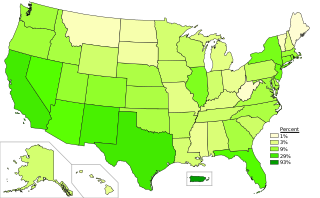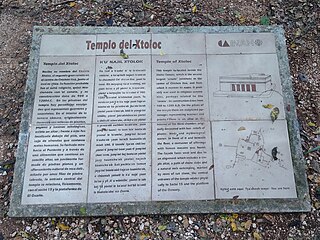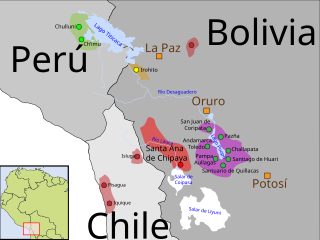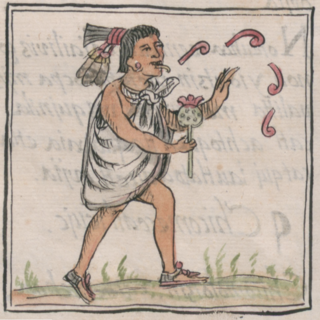
Catalan, known in the Valencian Community and Carche as Valencian, is a Western Romance language. It is the official language of Andorra, and an official language of three autonomous communities in eastern Spain: Catalonia, the Valencian Community, and the Balearic Islands. It also has semi-official status in the Italian comune of Alghero. It is also spoken in the Pyrénées-Orientales department of France and in two further areas in eastern Spain: the eastern strip of Aragon and the Carche area in the Region of Murcia. The Catalan-speaking territories are often called the Països Catalans or "Catalan Countries".

Asturleonese is a Romance language spoken primarily in northwestern Spain, namely in the historical regions and Spain's modern-day autonomous communities of Asturias, northwestern Castile and León and Cantabria, and also in a small neighbouring area of Portugal. The name of the language is largely uncommon among its native speakers, as it forms a dialect continuum of mutually intelligible varieties and therefore it is primarily referred to by various regional glossonyms like Leonese, Cantabrian, Asturian or Mirandese. Extremaduran is sometimes included as well. Asturleonese has been classified by UNESCO as an endangered language, as Asturian is being increasingly replaced by Spanish.

Spanish is the second most spoken language in the United States. Over 41 million people aged five or older speak Spanish at home. Spanish is also the most learned language other than English, with about six million students. Estimates range from 41 million to over 50 million native speakers, heritage language speakers, and second-language speakers. There is an Academy of the Spanish Language located in the United States as well.
Linguistic imperialism or language imperialism is occasionally defined as "the transfer of a dominant language to other people". This language "transfer" comes about because of imperialism. The transfer is considered to be a sign of power; traditionally military power but also, in the modern world, economic power. Aspects of the dominant culture are usually transferred along with the language. In spatial terms, indigenous languages are employed in the function of official (state) languages in Eurasia, while only non-indigenous imperial (European) languages in the "Rest of the World". In the modern world, linguistic imperialism may also be considered in the context of international development, affecting the standard by which organizations like the International Monetary Fund and the World Bank evaluate the trustworthiness and value of structural adjustment loans.
A heritage language is a minority language learned by its speakers at home as children, and difficult to be fully developed because of insufficient input from the social environment. The speakers grow up with a different dominant language in which they become more competent. Polinsky and Kagan label it as a continuum that ranges from fluent speakers to barely speaking individuals of the home language. In some countries or cultures which determine a person's mother tongue by the ethnic group they belong to, a heritage language would be linked to the native language.
A minority language is a language spoken by a minority of the population of a territory. Such people are termed linguistic minorities or language minorities. With a total number of 196 sovereign states recognized internationally and an estimated number of roughly 5,000 to 7,000 languages spoken worldwide, the vast majority of languages are minority languages in every country in which they are spoken. Some minority languages are simultaneously also official languages, such as Irish in Ireland or the numerous indigenous languages of Bolivia. Likewise, some national languages are often considered minority languages, insofar as they are the national language of a stateless nation.
Language shift, also known as language transfer or language replacement or language assimilation, is the process whereby a speech community shifts to a different language, usually over an extended period of time. Often, languages that are perceived to be higher status stabilise or spread at the expense of other languages that are perceived by their own speakers to be lower-status. An example is the shift from Gaulish to Latin during the time of the Roman Empire.

Leonese is a set of vernacular Romance language varieties currently spoken in northern and western portions of the historical region of León in Spain and a few adjoining areas in Portugal. In this narrow sense, Leonese is distinct from the dialects grouped under the Asturian language. There is no real linguistic division, though; it is only a purely political and identitary division, as dialectal areas are in fact shaped along a north-south axis. In the past, it was spoken in a wider area, including most of the historical region. The current number of Leonese speakers is estimated at 20,000 to 50,000. The westernmost fringes of the provinces of León and Zamora are in the territory of the Galician language, although there is dialectal continuity between the linguistic areas.

Amuzgo is an Oto-Manguean language spoken in the Costa Chica region of the Mexican states of Guerrero and Oaxaca by about 44,000 speakers. Like other Oto-Manguean languages, Amuzgo is a tonal language. From syntactical point of view Amuzgo can be considered as an active language. The name Amuzgo is claimed to be a Nahuatl exonym but its meaning is shrouded in controversy; multiple proposals have been made, including 'moss-in'.

Mexico does not have an official language but Spanish is the de facto national language spoken by the vast majority of the population, making Mexico the world's most populous Hispanophone country. The indigenous languages are from eleven language families, including four isolates and one that immigrated from the United States. The Mexican government recognizes 69 national languages, 63 of which are indigenous, including around 350 dialects of those languages. The large majority of the population is monolingual in Spanish. Some immigrant and indigenous populations are bilingual, while some indigenous people are monolingual in their languages. Mexican Sign Language is spoken by much of the deaf population, and there are one or two indigenous sign languages as well.

Otomi is an Oto-Pamean language spoken by approximately 240,000 indigenous Otomi people in the central altiplano region of Mexico. Otomi consists of several closely related languages, many of which are not mutually intelligible. The word Hñähñu[hɲɑ̃hɲṹ] has been proposed as an endonym, but since it represents the usage of a single dialect, it has not gained wide currency. Linguists have classified the modern dialects into three dialect areas: the Northwestern dialects are spoken in Querétaro, Hidalgo and Guanajuato; the Southwestern dialects are spoken in the State of Mexico; and the Eastern dialects are spoken in the highlands of Veracruz, Puebla, and eastern Hidalgo and villages in Tlaxcala and Mexico states.

The Uru–Chipaya family is an indigenous language family of Bolivia.
Linguistic discrimination is unfair treatment of people which is based on their use of language and the characteristics of their speech, including their first language, their accent, the perceived size of their vocabulary, their modality, and their syntax. For example, an Occitan speaker in France will probably be treated differently from a French speaker. Based on a difference in use of language, a person may automatically form judgments about another person's wealth, education, social status, character or other traits, which may lead to discrimination.

There are a number of languages of Morocco. De jure, the two official languages are Standard Arabic and Standard Moroccan Berber. Moroccan Arabic is by far the primary spoken vernacular and lingua franca, whereas Berber languages serve as vernaculars for significant portions of the country. The languages of prestige in Morocco are Arabic in its Classical and Modern Standard Forms and sometimes French, the latter of which serves as a second language for approximately 33% of Moroccans. According to a 2000–2002 survey done by Moha Ennaji, author of Multilingualism, Cultural Identity, and Education in Morocco, "there is a general agreement that Standard Arabic, Moroccan Arabic, and Berber are the national languages." Ennaji also concluded "This survey confirms the idea that multilingualism in Morocco is a vivid sociolinguistic phenomenon, which is favored by many people."
Crosslinguistic influence (CLI) refers to the different ways in which one language can affect another within an individual speaker. It typically involves two languages that can affect one another in a bilingual speaker. An example of CLI is the influence of Korean on a Korean native speaker who is learning Japanese or French. Less typically, it could also refer to an interaction between different dialects in the mind of a monolingual speaker. CLI can be observed across subsystems of languages including pragmatics, semantics, syntax, morphology, phonology, phonetics, and orthography. Discussed further in this article are particular subcategories of CLI—transfer, attrition, the complementarity principle, and additional theories.
Heritage language learning, or heritage language acquisition, is the act of learning a heritage language from an ethnolinguistic group that traditionally speaks the language, or from those whose family historically spoke the language. According to a commonly accepted definition by Valdés, heritage languages are generally minority languages in society and are typically learned at home during childhood. When a heritage language learner grows up in an environment with a dominant language that is different from their heritage language, the learner appears to be more competent in the dominant language and often feels more comfortable speaking in that language. "Heritage language" may also be referred to as "community language," "home language," and "ancestral language".

Nahuatl, Aztec, or Mexicano is a language or, by some definitions, a group of languages of the Uto-Aztecan language family. Varieties of Nahuatl are spoken by about 1.7 million Nahua peoples, most of whom live mainly in Central Mexico and have smaller populations in the United States.

Andean Spanish is a dialect of Spanish spoken in the central Andes, from southern Colombia, with influence as far south as northern Chile and Northwestern Argentina, passing through Ecuador, Peru, and Bolivia. While similar to other Spanish dialects, Andean Spanish shows influence from Quechua, Aymara, and other indigenous languages, due to prolonged and intense language contact. This influence is especially strong in rural areas.
Carmen Silva-Corvalán is a Professor Emerita of Spanish and Portuguese Linguistics at the University of Southern California, where she taught since she obtained her doctoral degree at the University of California, Los Angeles in 1979. Silva-Corvalán has published extensively on bilingualism and language contact, and on the semantic and discourse-pragmatic constraints which condition syntactic variation. Silva-Corvalan was one of the four chief editors of Bilingualism: Language and Cognition, Cambridge University Press.

Linguistic landscape is the "visibility and salience of languages on public and commercial signs in a given territory or region". Linguistic landscape has been described as being "somewhere at the junction of sociolinguistics, sociology, social psychology, geography, and media studies". It is a concept which originated in sociolinguistics and language policy as scholars studied how languages are visually displayed and hierarchised in multilingual societies, from large metropolitan centers to Amazonia. For example, linguistic landscape scholars have described how and why some public signs in Jerusalem are presented in Hebrew, English, and Arabic, or a combination thereof.











